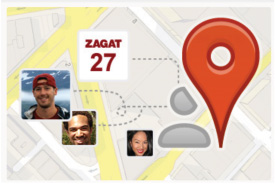Australia’s “dome of heat” has become so intense that the temperatures are rising off the charts – literally.
The air mass over the inland is still heating up – it hasn’t peaked
The Bureau of Meteorology’s interactive weather forecasting chart has added new colours – deep purple and pink – to extend its previous temperature range that had been capped at 50 degrees.

The range now extends to 54 degrees – well above the all-time record temperature of 50.7 degrees reached on January 2, 1960 at Oodnadatta Airport in South Australia – and, perhaps worringly, the forecast outlook is starting to deploy the new colours. Advertisement “The scale has just been increased today and I would anticipate it is because the forecast coming from the bureau’s model is showing temperatures in excess of 50 degrees,” David Jones, head of the bureau’s climate monitoring and prediction unit, said. While recent days have seen Australian temperature maps displaying maximums ranging from 40 degrees to 48 degrees – depicted in the colour scheme as burnt orange to black – both Sunday and Monday are now showing regions likely to hit 50 degrees or more, coloured purple. Clicking on the prediction for 5pm AEDT next Monday, a Tasmania-sized deep purple opens up over South Australia – implying 50 degrees or above. Aaron Coutts-Smith, the bureau’s NSW head of climate monitoring, though, cautioned that the 50-degree reading is the result of just one of the bureau’s models. “The indications are, from the South Australian office, that we are not looking at getting any where near that (50 degree level).” Still, large parts of central Australia have limited monitoring, so the 50.7 degree record may be broken. “The air mass over the inland is still heating up – it hasn’t peaked,” Dr Jones said. Australia’s first six days of 2013 were all among the hottest 20 days on record in terms of average maximums, with January 7 and today likely to add to the list of peaks. That would make it four of the top 10 in a little over a week. National record smashed And the country has set a new national average maximum of 40.33 degrees on Monday, beating the previous record – set on December 21, 1972 – by a “sizeable margin” of 0.16 degrees, Dr Jones said, adding that the figures are preliminary. “Today is actually shaping up to be hotter – and it could be a record by a similar margin,” he said. Another record to be smashed on Monday was Australia’s mean temperature. The country averaged 32.23, easily eclipsing the previous record – set on December 21, 1972 – of 31.86 degrees. Just 0.13 degrees separated the previous four highest mean temperatures, underscoring how far above average the day was. The scorching temperatures could last into the weekend and beyond, Dr Jones said, potentially breaking the country’s all-time high of 50.7 degrees. “The heat over central Australia is not going to go anywhere,” he said, noting that the northern monsoon and southern cold fronts have all been weak recently. “We know the air mass is hot enough to challenge the Oodnadatta record.” While the national data goes all the way back to 1910, the bureau views the figures are most reliable from about 1950. Before today, six of the 20 hottest days in Australian records have been in 2013 – with that tally likely to rise to seven out of 20 by the day’s end. Here are the rankings:
Hottest national averages on record (before today).
1 January 7, 2013: 40.33 degrees
2 December 21, 1972: 40.17
3 December 20, 1972: 40.01
4 December 22, 1972: 39.82
5 January 1, 1973: 39.79
6 January 6, 2013: 39.71
7 December 17, 2002: 39.7
8 January 2, 1973: 39.65
9 January 3, 2013: 39.55
10 December 16, 2002: 39.54
11 December 30, 1972: 39.48
12 December 31, 1972: 39.43
13 January 27, 1936: 39.4
14 January 1, 1990: 39.39
15 January 4, 2013: 39.32
16 January 5, 2013: 39.26
17 January 2, 1990: 39.22
18 January 2, 2013: 39.21
19 December 18, 2002: 39.2
20 January 13, 1985: 38.98
Source: Bureau of Meteorology


